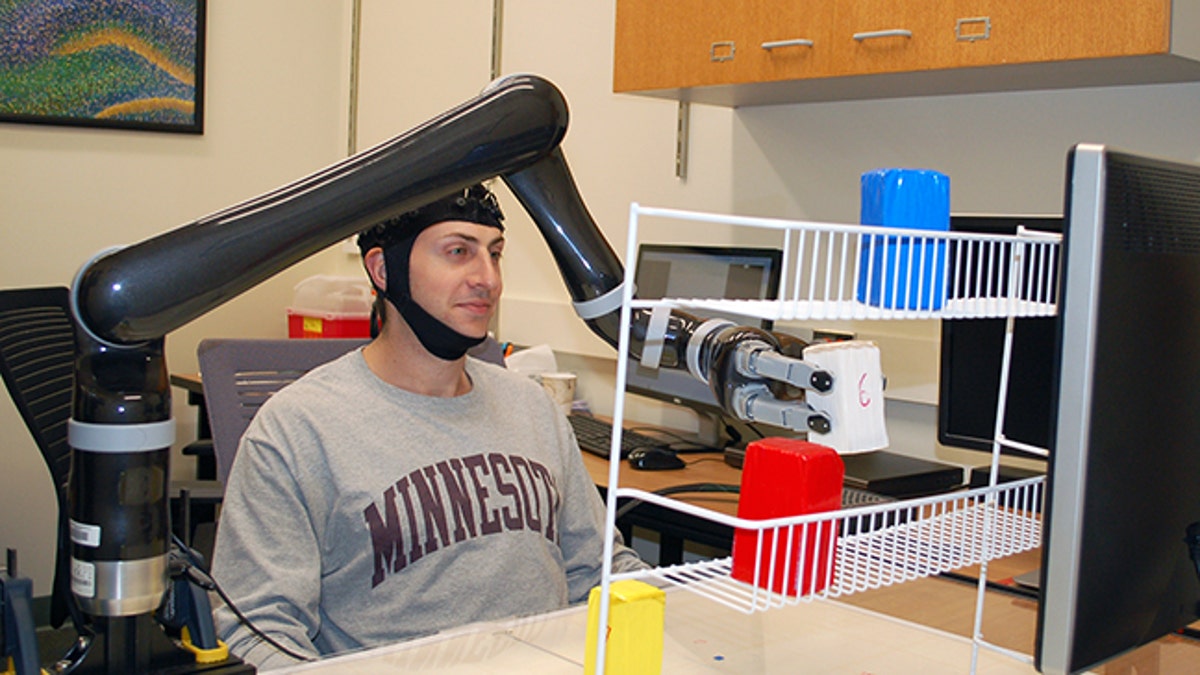
Research subjects at the University of Minnesota fitted with a specialized noninvasive brain cap were able to move the robotic arm just by imagining moving their own arms. (College of Science and Engineering)
Researchers have created a mind-controlled robotic arm they believe will help millions of paralyzed patients or those with a neurodegenerative disease. According to a news release, the noninvasive approach uses electroencephalography (EEG) based brain-computer interface to record electrical activity of the patient’s brain through a specialized cap. The EEG cap is fitted with electrodes and converts the activity into action using signal processing and machine learning.
“This is the first time in the world that people can operate a robotic arm to reach and grasp objects in a complex 3-D environment using only their thoughts without a brain implant,” Bin He, a University of Minnesota biomedical engineering professor and lead researcher on the study, said in the release. “Just by imagining moving their arms, they were able to move the robotic arm.”
While researchers used eight healthy patients to help develop the device, subjects gradually learned to imagine moving their own arms without actually moving them, which led to the control of a robotic arm in 3-D space. According to the news release, the subjects began by controlling a virtual cursor on a computer screen before moving on to the robotic arm. They eventually progressed to controlling the robotic arm to reach and grasp objects on a table and move them from the table to a shelf.
“This is exciting, as all subjects accomplished the tasks using a completely noninvasive technique,” He said in the release. “We see a big potential for this research to help people who are paralyzed or have neurodegenerative diseases to become more independent without a need for surgical implants.”
He said the next step will be to develop the technology so a mind-controlled robotic prosthetic limb could be attached to a person’s body, or develop it to better work with someone who has had a stroke or is paralyzed.
The University of Minnesota team published their breakthrough in the Nature journal Scientific Reports.




















